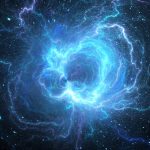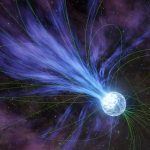Key takeaways
- Astronomers have observed a massive, perfectly spherical explosion caused by the merging of two neutron stars, providing new insights into kilonovas.
- The explosion, located in galaxy NGC 4993 about 140-150 million light-years away, defied expectations by being spherical rather than a flattened disk, challenging current understanding.
- The two neutron stars, each 12 miles in diameter with combined mass 2.7 times that of our sun, merged at 25% the speed of light, creating a temporary super neutron star before collapsing into a black hole.
- The explosion produced heavy elements like gold and platinum due to extreme conditions, with densities greater than an atomic nucleus and temperatures reaching billions of degrees.
- This discovery, analyzed with the Very Large Telescope in Chile, opens new avenues for research, suggesting unknown physics may be at play and prompting scientists to re-evaluate their theories.
Astronomers have spotted what may be the “perfect explosion,” a massive and completely spherical blast caused by the merging of two incredibly dense stellar remnants known as neutron stars moments before the merged entity fell to create a black hole.
Researchers detailed for the first time the outlines of a kilonova, a sort of explosion caused by the merger of neutron stars. The rapidly spreading inferno of bright materials they described confounded their assumptions.
The two neutron stars, with a total mass of nearly 2.7 times that of our sun, had been orbiting each other for billions of years before merging at tremendous speeds and exploding. This occurred in NGC 4993, a galaxy located around 140-150 million light years distant from Earth in the direction of the Hydra constellation. A light year is the distance traveled by light in one year, which is 5.9 trillion miles (9.5 trillion kilometers).
Kilonova explosions were hypothesized in 1974 and confirmed in 2013, but their appearance remained unknown until this one was discovered in 2017 and extensively examined.
“It is a perfect explosion in several ways. It is beautiful, both aesthetically, in the simplicity of the shape, and in its physical significance,” said astrophysicist Albert Sneppen of the Cosmic Dawn Center in Copenhagen, lead author of the research published in the journal Nature.
“Aesthetically, the colors the kilonova emits quite literally look like a sun – except, of course, being a few hundred million times larger in surface area. Physically, this spherical explosion contains the extraordinary physics at the heart of this merger,” Sneppen added.
The researchers predicted the explosion to resemble a flattened disk, a massive brilliant cosmic pancake with a jet of material pouring out of it.
“To be honest, we are really going back to the drawing board with this,” Darach Watson, astronomer at the Cosmic Dawn Center and research co-author, stated.
“Given the extreme nature of the physical conditions – far more extreme than a nuclear explosion, for example, with densities greater than an atomic nucleus, temperatures of billions of degrees and magnetic fields strong enough to distort the shapes of atoms – there may well be fundamental physics here that we don’t understand yet,” Watson said.
The kilonova was analyzed with the Very Large Telescope of the European Southern Observatory, which is located in Chile.
The two neutron stars originated as huge regular stars in a binary system. Each burst and collapsed after running out of fuel, leaving behind a tiny and dense core around 12 miles (20 kilometers) in diameter but with more mass than the sun.
They progressively moved closer to one other, circling at a rapid pace. Because of the strength of the other’s gravitational field, both were stretched out and dragged apart in the final seconds before the merger. Their core components collided at around 25% the speed of light, resulting in the universe’s most strong magnetic fields. The explosion released the brightness of about a billion suns for a few days.
The two momentarily became a single huge neutron star, which subsequently imploded to produce a black hole, an even denser object with gravity so strong that even light cannot escape.
Meanwhile, the outer sections of the neutron stars were stretched into lengthy streamers, with some material ejected into space. Heavy elements such as gold, platinum, arsenic, uranium, and iodine were formed throughout the process due to the high densities and temperatures.
The researchers proposed many possibilities to explain the explosion’s spherical form, including energy released from the short-lived single neutron star’s huge magnetic field and the function of mysterious particles known as neutrinos.
“This is fundamentally astonishing, and an exciting challenge for any theoreticians and numerical simulations,” Sneppen stated. “The game is on.”


